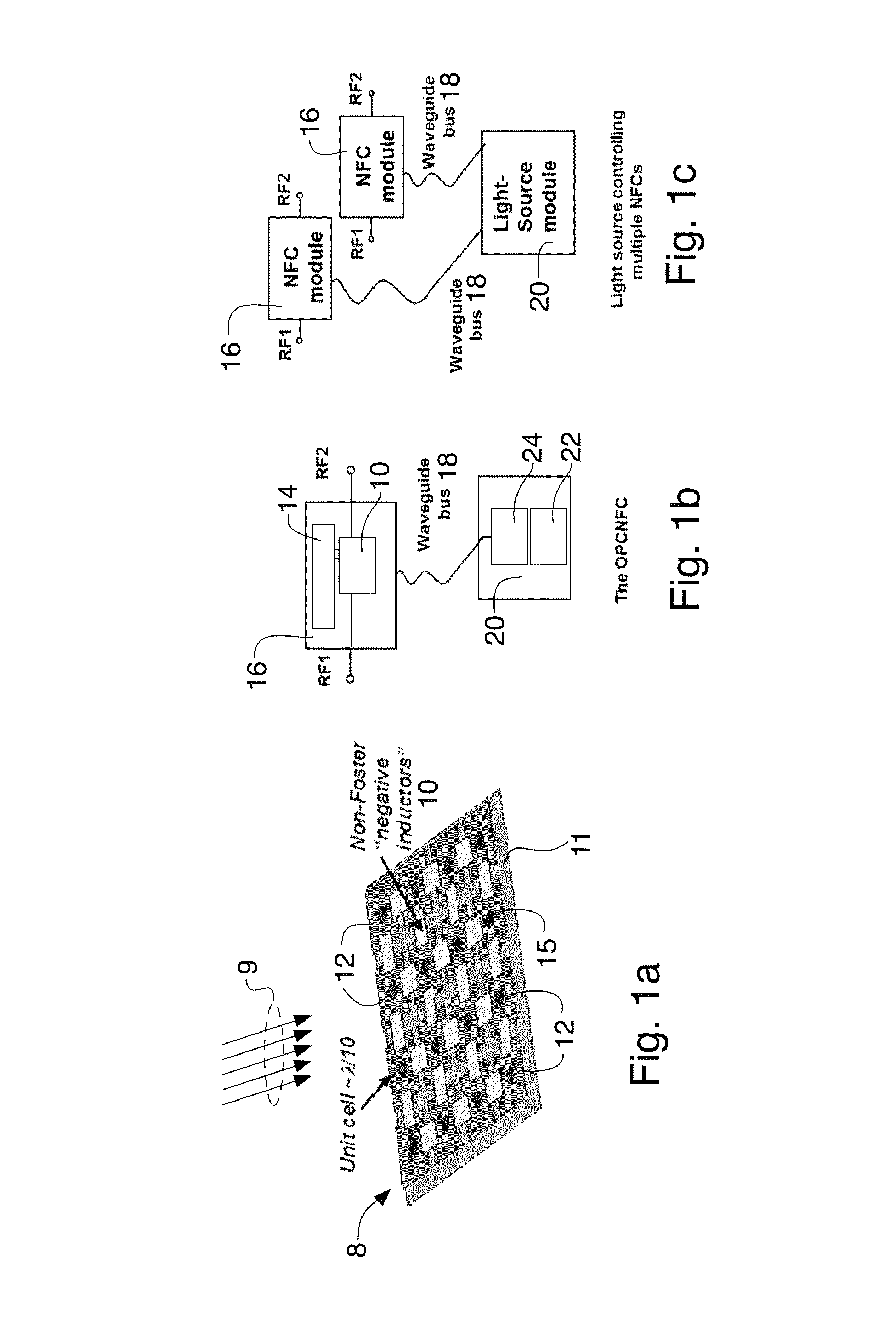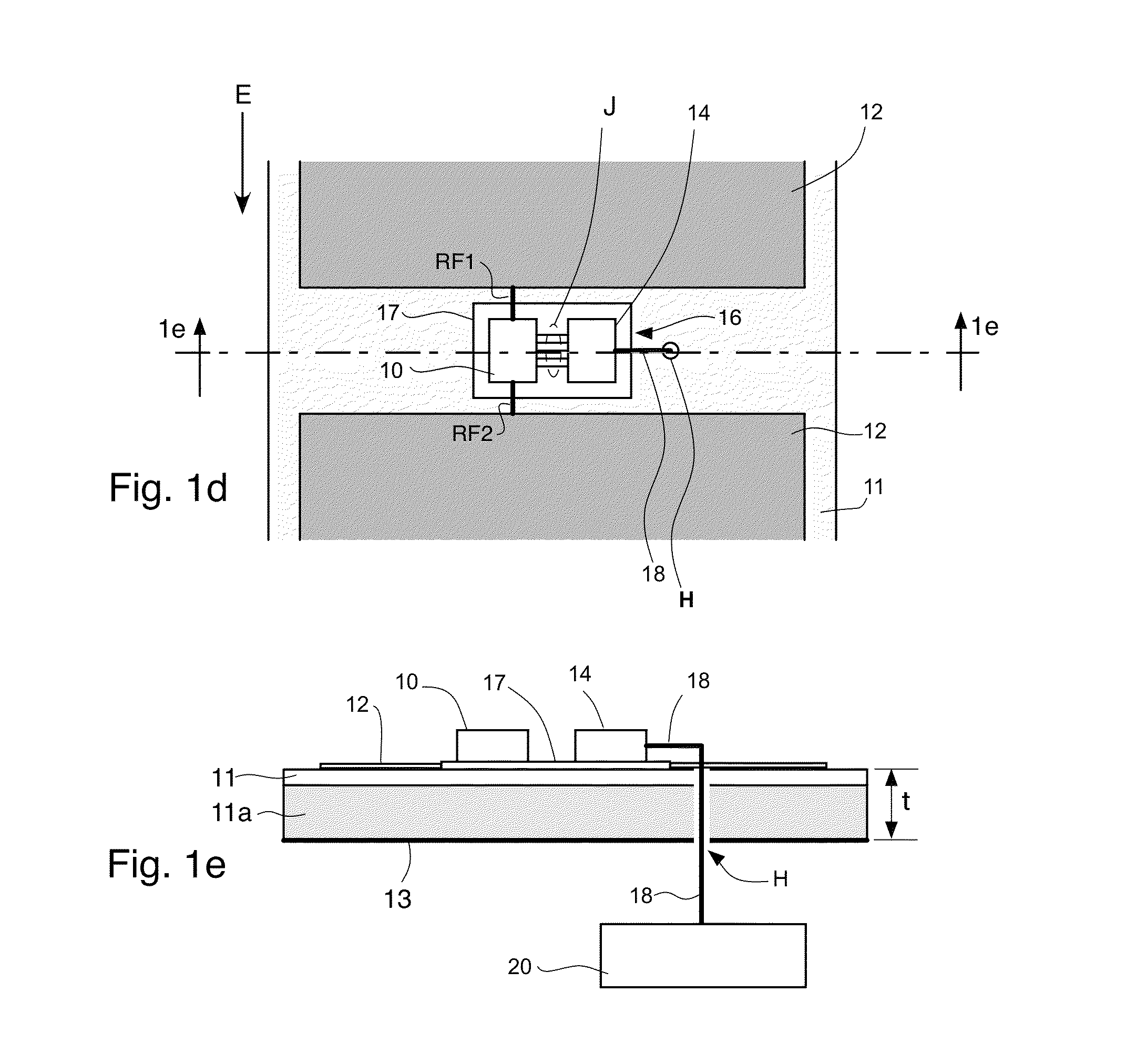Optically powered and controlled non-foster circuit
a non-foster circuit, optically powered technology, applied in the direction of impedence convertors, electrical devices, antennas, etc., can solve the problems of limited performance, inability to maintain bright lines of distinction between these terms, and the stability margin typically approaching zero
- Summary
- Abstract
- Description
- Claims
- Application Information
AI Technical Summary
Benefits of technology
Problems solved by technology
Method used
Image
Examples
Embodiment Construction
[0027]An exemplary application of OPCNFCs is the Active Artificial Impedance Surface (AAIS) 8 of FIG. 1a in which NFCs 10 which are preferably set up to serve as negative inductors (see, for example, FIG. 2) are connected between patches 12 which are arranged in a subwavelength periodic grid (which may have a pitch—or a spacing between centers thereof—equal to about λ / 10 where λ is the wavelength of impinging electromagnetic (EM) radiation 9 with which the AAIS is meant to interact). The patches 12 of FIG. 1a are depicted as square shaped but those skilled in the art making Artificial Impedance Surfaces know that the patches 12 may assume other geometric shapes (such as triangular shaped patches, hexagonal shaped patches, rectangular shaped patches, etc.). The patches 12 are disposed on a dielectric substrate 11 and are typically (but not necessarily) coupled to a ground plane 13 (disposed on an opposing surfaces of the dielectric substrate 11—see FIG. 1e) by a centrally located met...
PUM
 Login to View More
Login to View More Abstract
Description
Claims
Application Information
 Login to View More
Login to View More - R&D
- Intellectual Property
- Life Sciences
- Materials
- Tech Scout
- Unparalleled Data Quality
- Higher Quality Content
- 60% Fewer Hallucinations
Browse by: Latest US Patents, China's latest patents, Technical Efficacy Thesaurus, Application Domain, Technology Topic, Popular Technical Reports.
© 2025 PatSnap. All rights reserved.Legal|Privacy policy|Modern Slavery Act Transparency Statement|Sitemap|About US| Contact US: help@patsnap.com



